The Vatican Museums, an artistic sanctuary in the heart of Rome, are not just repositories of priceless masterpieces but also a living work of art themselves. Adorned with the magnificent dome designed by the genius Michelangelo, this museum is like a precious gem, attracting millions of visitors each year to admire and explore.
Acclaimed as one of the largest museums on the planet, the Vatican Museums are a vast treasure trove of culture, history, and art. It showcases immense collections reflecting the history and culture of the Roman Catholic Church over centuries. From ancient archaeological relics and unique anthropological wonders to masterpieces of painting and sculpture by Renaissance masters, the Vatican Museums promise a journey of discovery that is both surprising and fascinating for every visitor.
More than just a tourist attraction, the Vatican Museums are a symbol of magnificent architecture, a meeting point for the artistic essence of humanity. Stepping inside, visitors will be overwhelmed by the majestic and splendid beauty of the halls, corridors, and top-tier artworks displayed everywhere. From the imposing dome to the legendary Sistine Chapel, every corner of the museum holds historical stories and profound cultural values, inviting visitors to explore and experience.
Overview of the Vatican Museums: History, Architecture, and Essential Information
The Vatican Museums are located in St. Peter’s Square, the heart of Vatican City, a tiny nation holding an immense cultural heritage. With a vast area of over 42,000 square meters, the museum complex includes 12 buildings, 1,400 rooms, and 5 chapels, creating a colossal and intricate architectural ensemble. The museum’s history began in the 16th century under Pope Julius II, who envisioned transforming the site into a space for preserving and exhibiting art for the entire world.
The architecture of the Vatican Museums is a harmonious blend of various artistic styles, from Renaissance to Baroque, creating a unique and impressive beauty. Visitors cannot help but marvel at the exquisite dome designed by Michelangelo, a symbol of grandeur and refinement. The Bramante Staircase, another masterpiece, is also a prominent architectural highlight, showcasing creativity and top-notch construction techniques.
The Vatican Museums are not only a place to exhibit art but also a crucial part of Vatican history and culture. It preserves collections of immense historical value, reflecting the development of Western art and culture over centuries. From ancient Greek and Roman sculptures to magnificent Renaissance paintings, the Vatican Museums are a journey through time, taking visitors to explore the pinnacles of human art.
To visit the Vatican Museums effectively, visitors should note some important information. The museum is open from Monday to Saturday, from 8:30 AM to 6:30 PM, and closed on Sundays. The reference ticket price is 19 Euros per person. Visitors are advised to book tickets online in advance to avoid long queues and save time. The best time to visit is in the early morning or late afternoon to avoid crowds.

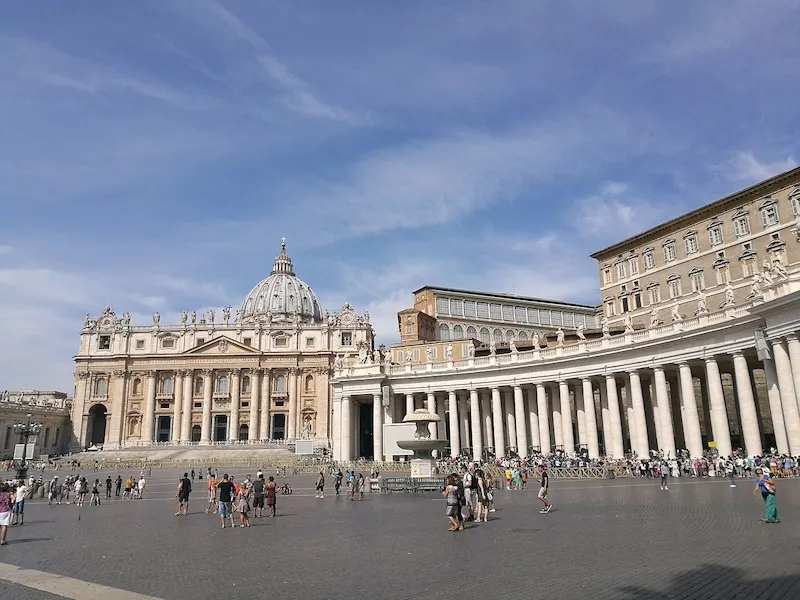
Must-See Art Collections at the Vatican Museums
The Vatican Museums are an artistic labyrinth with 54 smaller museums, each with its own theme and collection. To explore this vast treasure trove of art, visitors need a plan and should choose attractions that suit their interests and time. Below are some of the most prominent galleries that you should not miss when visiting the Vatican Museums:
Gallery of Maps (Galleria delle Carte Geografiche)
Entering the Gallery of Maps, visitors will be amazed by a magnificent space 120 meters long, displaying 40 beautiful hand-painted maps of Italy. These maps were created by friar Ignazio Danti over 3 years, showing the meticulousness, accuracy, and top-tier painting talent of 16th-century mapmaking art. The Gallery of Maps is not just a simple map collection but also a unique artwork, providing visitors with a panoramic view of the geographical beauty of Renaissance Italy.
Gallery of Tapestries (Galleria degli Arazzi)
The Gallery of Tapestries, also known as Galleria Degli Arazzi, is home to the most magnificent and exquisite tapestries in the Vatican. These tapestries are not just decorations but also artworks that tell stories about the life of Jesus Christ and Pope Urban VIII. With skillful and meticulous needlework down to every detail, the tapestries here demonstrate master craftsmanship and unparalleled artistic value.
Pio Clementino Museum
The Pio Clementino Museum is one of the most important museums in the Vatican, showcasing masterpieces of ancient Greek and Roman sculpture. The museum is named after Popes Clement XIV and Pius VI, who greatly contributed to the establishment and expansion of the Vatican Museums. The Pio Clementino Museum includes 12 galleries, each displaying a unique collection of classical sculpture and art. The highlight of the museum is the famous Laocoön Group statue, a sculpture depicting the Trojan priest and his sons being attacked by sea serpents. In addition, the marble Apollo Belvedere statue, a symbol of beauty and perfection in ancient Greek art, is also a masterpiece not to be missed.
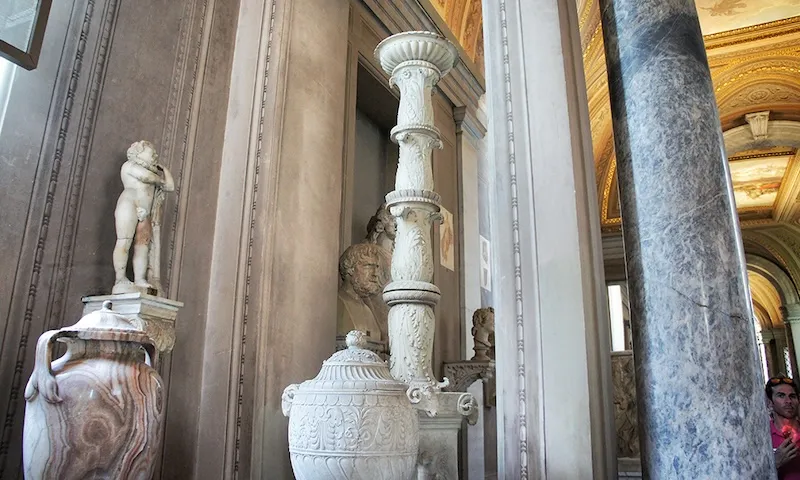
Gregorian Egyptian Museum
The Gregorian Egyptian Museum was established in 1839 under Pope Gregory XVI and displays precious artifacts from ancient Egypt. The museum consists of 9 galleries, formerly the residence of Pope Pius IV. The museum’s collection includes artifacts collected from Emperor Hadrian’s Villa Adriana in Tivoli, offering visitors the opportunity to explore ancient Egyptian civilization right in the heart of the Vatican. Here, visitors can admire Egyptian mummies, sphinxes, jewelry, and many other artifacts, revealing the mysteries and wonders of the Nile civilization.
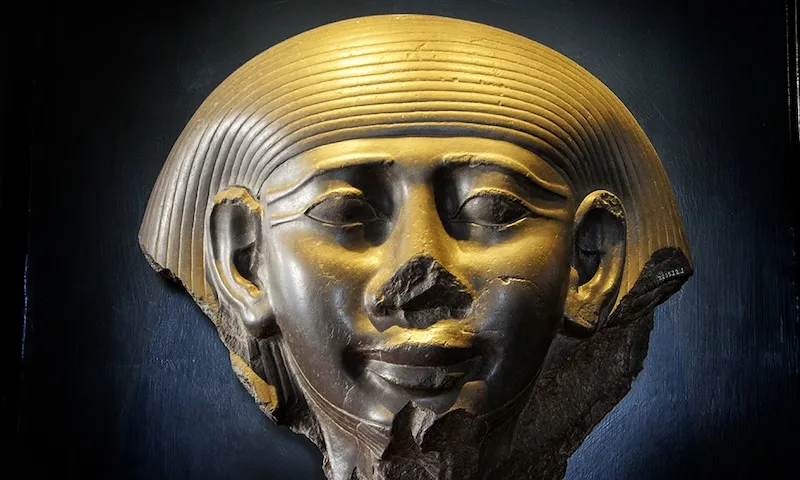
Raphael Rooms (Stanze di Raffaello)
The Raphael Rooms are a system of four rooms decorated by the painting genius Raphael and his students. Each room has a distinct theme, named after the most famous frescoes: the Hall of Constantine, the Stanza of Heliodorus, the Stanza della Segnatura, and the Stanza del l’Incendio di Borgo. The frescoes here are not only beautiful artworks but also vivid historical and Biblical stories. The Stanza della Segnatura, with the famous fresco “The School of Athens,” is considered the artistic pinnacle of Raphael, demonstrating his erudition, talent, and vision.
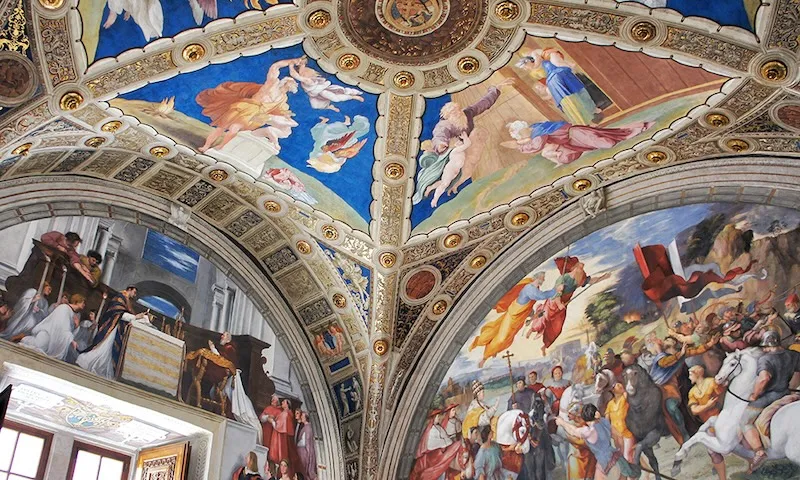
Sistine Chapel (Cappella Sistina)
The Sistine Chapel is perhaps the most famous and anticipated destination in the Vatican Museums. Completed in 1480, the chapel is where important Vatican religious ceremonies take place. However, what makes the Sistine Chapel legendary are Michelangelo’s supreme frescoes. Michelangelo decorated the chapel’s ceiling with scenes from the Old Testament, most famously “The Creation of Adam” and “The Last Judgment”. These frescoes not only demonstrate Michelangelo’s extraordinary talent but are also symbols of Renaissance art and Western culture.
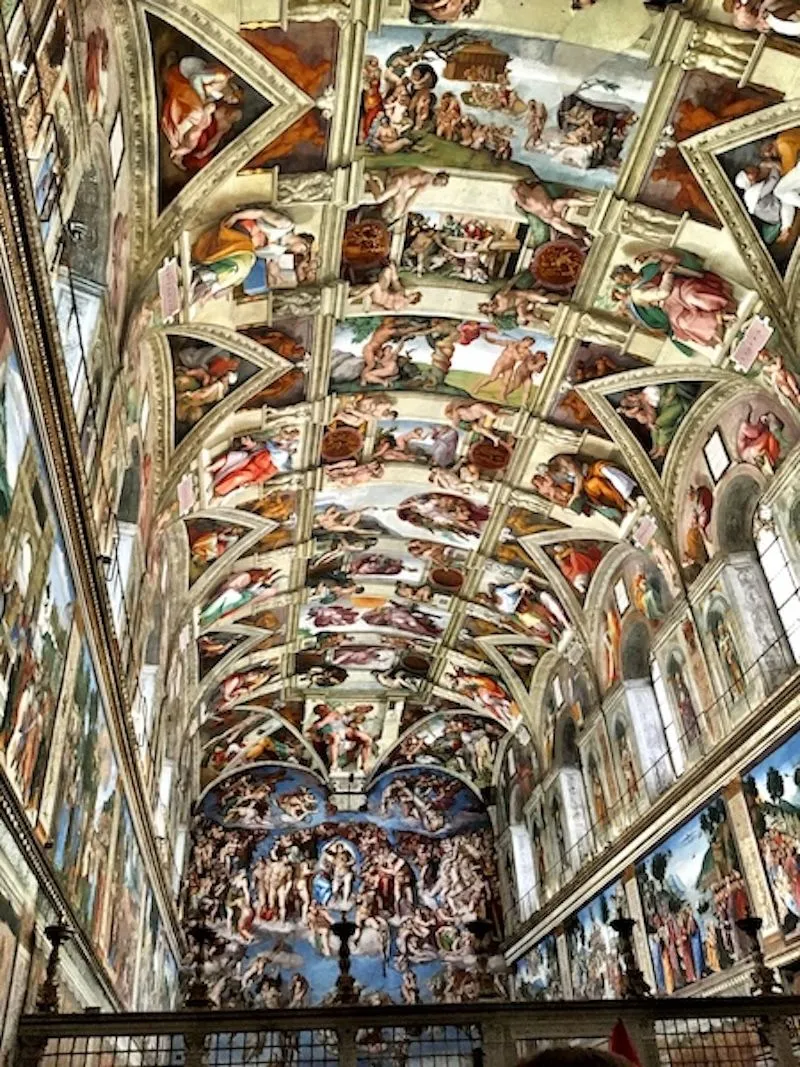
Tips for Visiting the Vatican Museums: Helpful Advice and Recommendations
To have a fulfilling and memorable visit to the Vatican Museums, visitors should equip themselves with the following experiences and helpful tips:
Plan Ahead: The Vatican Museums are vast and have so much to explore. Plan ahead, identify the areas and collections you want to see to save time and avoid getting lost.
Book Tickets Online: Booking tickets online in advance is essential to avoid long queues, especially during peak tourist season. You can book tickets on the official Vatican Museums website or through reputable travel websites.
Visiting Time: The best time to visit the Vatican Museums is in the early morning or late afternoon to avoid crowds. If possible, avoid visiting on weekends or major holidays.
Appropriate Attire: The Vatican Museums are a religious site, so visitors should dress respectfully and modestly. Avoid wearing revealing clothing, short skirts, or sleeveless shirts.
Tour Guide: Hiring a tour guide can help you understand more deeply the history, art, and culture of the Vatican Museums. The guide will take you through the most important attractions and share interesting stories about the artworks.
Visiting Duration: To comfortably visit the Vatican Museums, you should spend at least half a day, or preferably a whole day. If you have limited time, focus on key attractions like the Sistine Chapel, Raphael Rooms, and Pio Clementino Museum.
Rest and Refreshments: Inside the museum, there are rest areas and cafes where visitors can relax and eat. However, prices may be a bit high, so you can bring snacks and drinks to save money.
Comfortable Walking Shoes: Wear comfortable shoes as you will be walking a lot in the Vatican Museums.
Respect Regulations: Comply with museum regulations, do not touch artifacts, do not make noise, and maintain general hygiene.
Photography: Photography is allowed in most areas of the museum, except for the Sistine Chapel. However, turn off the flash to protect the artworks.
Enjoy and Appreciate: Most importantly, take time to enjoy and appreciate the beauty of art and culture at the Vatican Museums. Don’t just rush for quantity, but slowly explore and admire these priceless masterpieces.
Conclusion
Visiting the Vatican Museums is a unique and meaningful cultural travel experience. It is not just a simple museum but also a treasure trove of art, history, and culture for humanity. With immense collections, magnificent architecture, and top-tier artworks, the Vatican Museums deserve to be a must-visit destination on your journey to explore Rome and the Vatican. Plan and prepare carefully to have a truly fulfilling and memorable visit to the Vatican Museums, expanding your knowledge and soul before the endless beauty of world art.